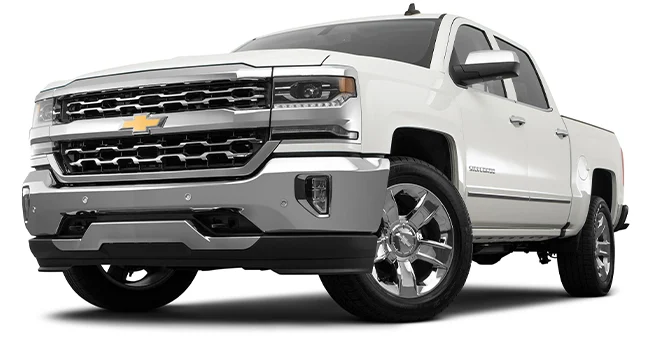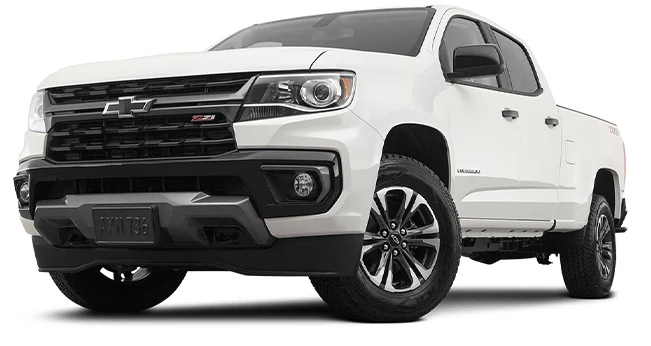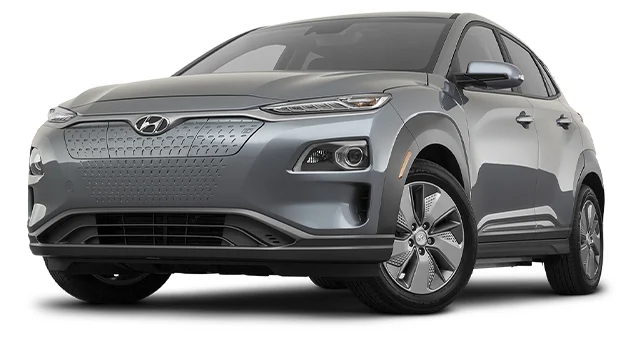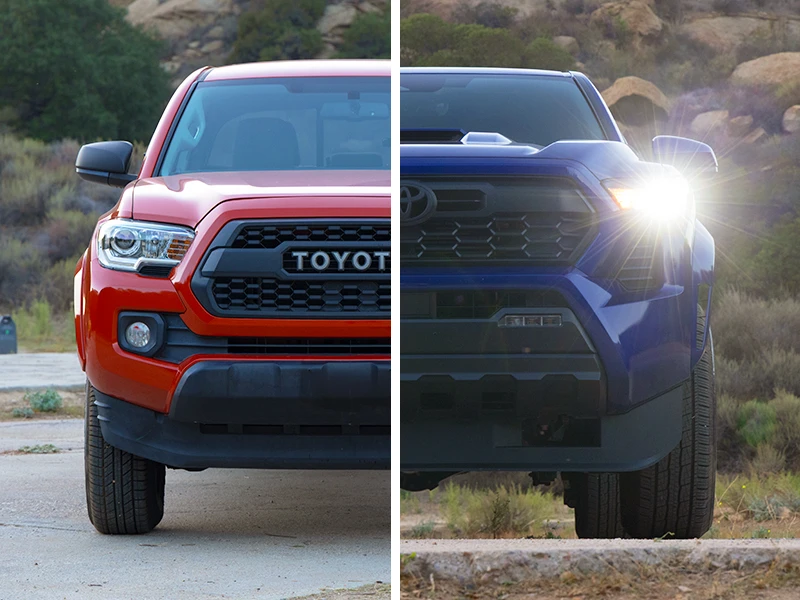Understanding the power of your vehicle.

Both horsepower and torque give you an indication of a vehicle's power but they're different measurements that are worth understanding. If you're looking for a general sense of how powerful a vehicle is, look for the horsepower: the higher the number, the more oomph it'll have. If you're interested in towing with your vehicle or want a vehicle with great acceleration, you want to take torque into account.
In this article, we'll look at the difference between horsepower and torque as well as how you can use these figures to find the vehicle best suited to your needs.
This is part of our Technology Explainers article series. In most modern vehicles, software is now as critical as powertrain performance. Learn more about the importance of vehicle software updates.
What is horsepower?

Horsepower is the maximum power available to a vehicle. In theory, the higher the number, the more power is sent to the wheels and the faster it will go. This is why you see some sports cars with astonishingly high horsepower figures.
Power figures can be calculated in different ways. Typically, the horsepower or “hp" figure quoted is the maximum available to that vehicle. Sometimes, though, the figure may be calculated at different engine revs, which gives us brake horsepower. For example, the mightily powerful 2019 Dodge Challenger Hellcat produces 717 horsepower from its supercharged V8—that's 717 brake horsepower at 6000 rpm.
However, the amount of acceleration you get depends on many factors, including the weight of the car and its torque. This means that the highest horsepower vehicle might not always be the fastest.
What is torque?

Torque is simply a measure of turning force. When it comes to your vehicle, it's the measure of the force with which the engine will turn. This is an important consideration, especially if you're looking for hauling power. Torque is measured in lb-ft so keep an eye out for this figure if you want a better sense of a vehicle's capabilities.
Take the 2019 Chevrolet Silverado 1500, for example. With its 6.8L V8 engine and four-wheel drive, it'll tow an estimated 12,200 lbs, when properly equipped.1 This is thanks to the 460 lb-ft of torque produced by the engine. By comparison, a truck with a lower towing capacity will likely have less torque. For example, the 2019 Toyota Tacoma with its 3.5L V6 will tow an estimated 6,800 lbs, when properly equipped.1 The V6 engine offers 265 lb-ft of torque, which is impressive but no match for the Silverado's V8.
You'll usually find maximum torque from diesel engines, which is why many trucks come with a diesel option. This is because a diesel engine is designed to produce more power—they use longer strokes to give pistons more leverage as they rotate, which creates more force.
What's the difference?
In very simple terms, torque allows you to feel the sensation of acceleration when you put your foot down, while horsepower is your overall speed and power. This makes sense when you consider that horsepower is calculated from torque.
Without going into too much technical detail, here's how you can calculate horsepower with a simple equation: Horsepower = Torque x RPM / 5,252 (where 5,252 is the conversion between lb-ft and horsepower). This means the two are closely linked so, often, higher horsepower means higher torque.
When you're looking at buying a car, consider both numbers. Horsepower is a good indicator of overall power but the torque can tell you a little bit more about what the car is capable of. It's worth bearing in mind, though, that the higher number doesn't always mean more towing capacity, acceleration, or speed. The weight of the vehicle itself, from compact city cars to supersized trucks, plays a huge part in its abilities.
When you're shopping for a used vehicle, you might be wondering what to look for when glancing over all those figures. It actually all depends on what you want to use the vehicle for. Here's a little guidance to help you find the one that's right for you.
An engaging drive

If you're after a fast ride, you might be looking at horsepower. This is a great indication of pure speed and probably all you need to take notice of if you just want to drive quickly. You might want to take torque into account if you're looking for quick acceleration, though. Look for low-end torque (how much is available at lower revs) if you want to be able to pull off the line quickly or accelerate past a car on the highway without shifting down a gear.
The 2018 Mazda MX-5 Miata offers 155 horsepower and 148 lb-ft of torque at 4,600 rpm from its 2.0L engine. Because the car is light and agile, those figures are plenty to offer you a spirited drive, and it's ideally suited to dinghy-style towing, if you fancy taking it on a bigger road trip. But if maximum speed is more important, look for something with a little more horsepower. The 2018 Ford Mustang with the 2.3L Ecoboost® engine pumps out 310 horsepower with 350 lb-ft of torque, but what's important here is that you'll get maximum torque at 3,500 rpm. Compare this to the maximum torque of the Miata and not only will you get more power as you accelerate but you'll also get it earlier.
For those looking to tow

When it comes to towing, look for torque. A powerful work truck with impressive towing figures is always going to have higher torque than a small truck designed for light hauling. If you want to pull a camper, ATV, or a trailer, keep an eye out for these vehicles:
If you're after a capable SUV, the 2019 Jeep Grand Cherokee will tow an estimated 6,200 lbs with the V6 engine, when properly equipped.1 This is thanks to the powerful Pentastar® 3.6L V6 engine, which generates 360 horsepower and 390 lb-ft of torque.
If a midsize truck is more your style, look to the 2019 Honda Ridgeline with its 280-horsepower V6 engine, which offers 262 lb-ft of torque and an estimated 5,000 lb towing capacity (when properly equipped).1
For lots of low-end torque, the 2021 Chevrolet Colorado offers an estimated 7,700 lb towing capacity in the LT trim with rear-wheel drive and the available 2.8L diesel engine, when properly equipped.1 The diesel engine is a great choice if you're looking for a capable truck as it has 181 horsepower and a healthy 369 lb-ft of torque.
On mountainous roads

If you live in a hilly area or just like to tackle mountain roads on the weekend, a car with good low-end torque is exactly what you need. Whether you go for a manual or automatic gearbox, lots of low-end torque means you'll be able to hit the gas to get up a hill without shifting down. This makes for an easier drive but it also means you'll be able to accelerate quickly where you need to.
For maximum acceleration

If you love that feeling of being pushed back in your seat when you hit the gas, look for torque, as this contributes to a vehicle's ability to get off the line quickly. If you're all about maximum acceleration then maybe consider an electric car. While they tend to be heavier than their combustion engine counterparts, they're incredibly powerful with instant torque available as soon as you put your foot down (as there are no revs to climb through to find the maximum).
As an example, the 2020 Hyundai Kona EV has 290 lb-ft of instantly available torque compared to the 2020 Kona gasoline version which has 132 lb-ft at 4500 rpm.
Horsepower and torque are undeniably related but understanding what the numbers mean should help you find the vehicle that's right for your needs. Whether you're looking for a torquey work truck or a high-horsepower sports car, you now know what to look out for when it comes to horsepower vs. torque.
Need more inspiration? Take a look at these related articles:




